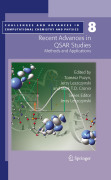
Recent advances in QSAR studies: methods and applications
Cronin, M.T.
Leszczynski, J.
Puzyn, T.
This book presents an interdisciplinary overview on the most recent advances in QSAR studies. The first part is handbook-esque and consists of a comprehensive review of QSAR methodology written by outstanding scientists and highly experienced lecturers. It focuses on methodology and new ideas, providing readers with an idea of recent trends and developments in each part of QSAR strategy(descriptors, methods of modelling, validation). The second part highlights the interdisciplinary aspects and new areas of QSAR modelling. It outlines the theoretical framework together with practical applications. The most optimal solutions (descriptors, mathematical/statistical methods, validation) in the individual areas of interest (environmental risk assessment, drug design, etc.) are also discussed in more detail. “Recent Advances in QSAR Studies: Methods and Applications” is targeted at scientists focussed on developing new methodologies as well as researchers engaged in trying to solve specific problems via QSAR. An interdisciplinary overview on recent advances in Quantitative Structure–Activity Relationships (QSAR) studies Presents both a review of new ideas about methodology and new areas of QSAR applications A simply written, practical guide for academics, industrial scientists and decision makers taking their first steps in QSAR analysis INDICE: Partt I. New ideas in QSAR methodology: Introduction to QSAR approach. Molecular descriptors. Quantum mechanical calculations in QSAR. CoMFA. Simplex representation of molecular structure (SiRMS-QSAR). 4D QSAR. Data basis and experimental data for QSAR, data splicing. Methods of modeling (linear, nonlinear). Validation of QSARs, applicability domain estimation.- Part II. Recent applications of QSAR models: Prediction of physicochemical properties. QSARin chromatography: Quantitative Structure – Retention Relationships. Chemometric Methods and Theoretical Molecular Descriptors in Predictive QSAR Modeling of Environmental Behavior of Organic Pollutants. Human health effect. ADME – Absrorption, Distribution, Metabolism, Elimination. Drug design. Role of QSAR in regulatory purpose of new chemicals in Europe (REACH). US EPA computational tools for risk assessment.- QSAR for nanomaterials – a new challenge.
- ISBN: 978-1-4020-9782-9
- Editorial: Springer
- Encuadernacion: Cartoné
- Páginas: 600
- Fecha Publicación: 01/05/2009
- Nº Volúmenes: 1
- Idioma: Inglés
